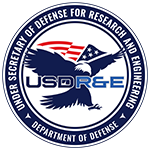OSC Credit Program
The window for submitting an Application Part 1 for consideration under the September 27, 2024, Notice of Funding Availability - Equipment Finance ("NOFA") closed on February 3, 2025. OSC is no longer accepting Application Part 1 submissions or scheduling pre-application consultations related to this NOFA.
OSC has been engaging directly with existing applicants. If you have not heard back from OSC on the status of your application, please send an update to OSC.Loan.Application@osc.mil with "NOFA 1 Contact" in the subject line.
OSC is developing additional financial instruments at this time and future offerings will be announced on this website and in the Federal Register.
Debt Financing
Who we are:
The OSC Credit Program provides debt financing to eligible borrowers in critical technology areas that drive national and economic security. OSC’s loan and loan guarantee authority is utilized to attract and scale investments for national security.
Financing Benefits
OSC offers loans with flexible financial terms:
- Interest rate comparable to the U.S. Treasury rate of a similar maturity. OSC sets its interest rate based on the U.S. Treasury rate on the date of loan closing. The rate is calculated using the life of the loan plus a risk premium.
- Sculpted repayment profile. OSC can offer sculpted repayment schedules to match borrowers’ anticipated revenues and expenses for the life of the loan.
- Long repayment period. OSC loans can offer longer tenors, allowing for capitalization of equipment cost and associated expenses over the useful life of the financed assets.
- Deferred payment. Payments may be deferred several years during a grace period.
OSC loans can be combined with various funding sources. OSC loans can be combined with private equity, corporate debt, grants, and other funding sources to fully fund a project.
Eligibility
While each project offering is unique, all applications must adhere to eligibility and programmatic policies found in the Notice of Funding Availability. Below is a summary of OSC’s loan criteria:
Types of borrowers:
- Public and private companies domiciled in the U.S., including those with foreign ownership.
- Businesses that support a Covered Technology Category, as defined in the Fiscal Year 2024 National Defense Authorization Act.
- Creditworthy Businesses that demonstrate eligibility and viability of the proposed underlying commercial project or transaction.
Eligible financing activities include:
Capital investment in property, plant and equipment, including acquisition and installation of equipment and the following associated soft costs:
- Project development costs and activities, including planning, preliminary engineering, design, environmental review, revenue forecasting, and other pre-construction development costs.
- Construction, rehabilitation, replacement, modernization, and expansion activities.
- Capitalized interest, reasonably required reserve funds, capital issuance expenses and
- Other carrying costs during project development and construction.
- Ancillary banking and advisory fees directly tied to the transaction.
Key features:
- Extended, multi-tranche drawdown availability to accommodate project/transaction development phase through the commencement of commercial operation.
- Loan repayment tenors based on the economic and technical useful life of the asset being financed.
- Fixed Interest rate as low as the U.S. Treasury rate of a similar maturity locked in at the date of financing closing.
- Flexible amortization profile.
- NEPA, Davis-Bacon, American Iron and Steel, Build America, Buy America Act, and other federal cross-cutting provisions may apply.
Ineligible businesses or projects:
- Companies who are early-stage, pre-revenue or have insufficient operating history without a repayment guarantee from a creditworthy sponsor.
- If the prospective borrower is seeking financing for a project or transaction to produce a technology, product, asset, and/or service for which the Federal Government is the sole user.
- If the prospective borrower is seeking financing for a project or transaction to produce a technology, product, asset, and/or service where repayment is majority dependent on current or anticipated Federal sources (e.g., grants or contracts).
- If the prospective counterparties or project jurisdictions present a concern to the national security interests of the U.S.
Process
OSC inaugural Equipment Finance offering will have three main process phases – project selection, project underwriting, and project monitoring – with several steps within each phase.
- Phase 1: Application Part 1 and “Project Selection”
OSC requires an “Application Part 1” from prospective borrowers wherein businesses provide information that OSC uses to determine the project’s eligibility, creditworthiness, and alignment with OSC’s policy priorities. Based on these reviews, OSC selects projects which it intends to fund. OSC proposes preliminary indicative terms and conditions for the project and invites them to continue through the application process.
- Phase 2: Application Part 2 and “Project Underwriting”
Each invitee must submit an “Application Part 2” in addition to their Application Part 1. Using the additional information provided in Application Part 2, OSC conducts a detailed evaluation of the project. If bankability is established following the completion of due diligence, OSC and the applicant further develop the loan terms and conditions for the project and negotiate until a mutually agreeable term sheet is defined. OSC will seek credit approval for the proposed financing from the Department of Defense and the Office of Management and Budget. If approved, OSC and the borrower negotiate the loan agreement and related project documents. Please note that on a case-by-case basis, OSC may require involvement of third-party advisory services to assist with Phase 2 and Phase 3 of the application process.
- Phase 3: Loan Approval and Project Monitoring
Following loan closing, borrowers will have to meet several requirements to receive funding and remain in compliance with the loan agreement. There are three main categories of project monitoring activities: disbursements, loan servicing, and loan monitoring. The executed loan agreement will identify specific requirements pertaining to each credit instrument.
Office of the Under Secretary of Defense,
Research and Engineering (OUSD(R&E))
3030 Defense Pentagon, Washington, DC 20301-3030
Contact Us
Contact Us
Information for the USD(R&E):
Contact OUSD(R&E) Staff
For website issues: Contact Webmaster



